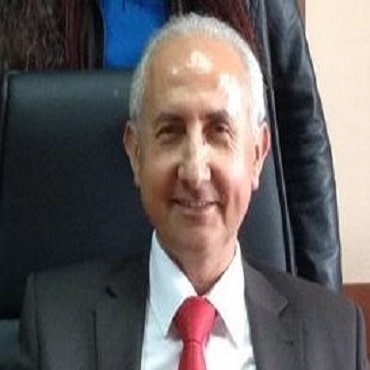
3D Printing 2019

Theme: Execution of Envision & Visuality by 3D Print
2nd Annual Conference on 3D Printing and Additive Manufacturing will be held in Dubai, UAE during May 22-23, 2019. Major attractions of this event would revolve around keynote presentations, oral presentations and poster presentations. This year we are focusing on the theme “Execution of Envision & Visuality by 3D Print". 3D Printing has been applied in engineering and healthcare since the begning of 20th century. For the manufacturing of custom prosthetics and dental implants, it was first used and then onwards the medical applications for 3D printing has evolved significantly. 3D printing is the way towards making cell designs in a restricted space utilizing 3D printing technology, where cell capacity and viability are saved inside the printed build. 3D printing adds to huge advances in the medical field of tissue engineering by allowing for research to be done on innovative materials called biomaterials. In bioprinting, there are three major types of printers that have been utilized. These are inkjet, laser-assisted, and extrusion printers. 3D bioprinters are streamlined to have the capacity to print skin tissue, heart tissue, and veins among other essential tissues that could be appropriate for surgical treatment and transplantation.
Why to Attend?
To learn in different space and getting noticed the challenges and innovations in the area of 3D printing and additive manufacturing, To gain the insights in the area of printing complex tissues and cellular printing, To network with the key professionals and noticed the regulatory and ethical issues faced by the industry.
Who should attend?
-
Doctors, Surgeons and technical experts from the departments like
- Surgery
- Orthopedics
- Maxillofacial prosthodontics
- Cardiology
- Dentistry
- Cosmetology & Dermatology
-
Professors, lecturers, engineers, scientists, product developers, from areas like
- Medical and biomedical engineering
- Additive manufacturing
- Biomaterials engineering
The 3D printing ceramics market is estimated to be valued at USD 27.8 Million in 2015 and is projected to reach USD 131.5 Million by 2021, at a CAGR of 29.6% from 2016 to 2021. Rapid increase in demand from end-user industries for different applications is expected to drive the overall demand for 3D printing ceramics market in coming years. The base year used for study is 2015 and the forecast period is 2016 to 2021. 3D printing ceramic market suggested on the basis of different end-use industries, such as aerospace & defence, healthcare, automotive, consumer goods & electronics, manufacturing & construction, and others.
3D Printing Summit 2019 | 3D Printing Innovations | 3D Printing 2019 | Bioprinting Symposiums 2019 | 3D Printing Workshops 2019 | Bioprinting Congress 2019 | Bioprinting Summit 2019 | Tissue and Organ Printing 2019 | Printing Modelling 2019 |
In the electronics industry, a widely recognized concern among designers and engineers in the design, testing, and integration of multilayer PCB prototypes in an electronics product. The more intricate the design, 3D printing a PCB makes manufacturing a complex multilayer PCB much easier by cutting out several steps. Normal PCB manufacturing technology requires blind and open to being drilled and plated the 3D printing process simply print them. it is focused on the research and development of advanced 3D printed electronics, including a 3D printer for multilayer printed circuit boards (PCB's), and the development of nanotechnology-based conductive and dielectric inks, which are complementary products for 3D printer. 3D inkjet multilayer PCB printing offers the kind of flexibility and responsiveness required in today’s competitive world and eliminates many of the drawbacks associated with outside PCB printing facilities. It lets the designer rapidly build functional prototypes in-house, thus helping to identify product defects in the initial stages of design. PCBS with interconnections and through holes in hours including even the most complex prototypes.
3D Printing Summit 2019 | 3D Printing Innovations | 3D Printing 2019 | Bioprinting Symposiums 2019 | 3D Printing Workshops 2019 | Bioprinting Congress 2019 | Bioprinting Summit 2019 | Tissue and Organ Printing 2019 | Printing Modelling 2019 |
3. Additive Manufacturing and 3D Robotics:
One technology relies on steady, repetitive motion to build each infinitesimal layer, over and over again. The other technology is renowned for its repeatability and control. It's a match made in disruptive technology, in the future of manufacturing robots are not only enabling additive manufacturing, they're tending 3D machines which are also robotic, automation and allowing them These technologies are used to develop machines that can substitute for humans and replicate human actions. 3D robots can be used in many situations and for lots of purposes where humans cannot survive robots can take on any form but some are made to resemble humans in appearance in the acceptance of a 3D robot the approach of minimally invasive techniques in robotics, for the advent intervention.
3D Printing Summit 2019 | 3D Printing Innovations | 3D Printing 2019 | Bioprinting Symposiums 2019 | 3D Printing Workshops 2019 | Bioprinting Congress 2019 | Bioprinting Summit 2019 | Tissue and Organ Printing 2019 | Printing Modelling 2019 |
4. Tissue Engineering and Fabrication:
Tissue engineering aims to collect functional tissue body applications with which it regenerates the medicine and drug testing. Recently, in the 3D printing, it has shown a great promise in tissue fiction with a structural control from micro to macro scale by using a layer by layer approach. Through the scaffold based or scaffold free approach, the standard 3D printed tissue engineering build and it provides a biomimetic structural environment those facilitates tissue creation and advertise the host of tissue assimilation.
3D Printing Summit 2019 | 3D Printing Innovations | 3D Printing 2019 | Bioprinting Symposiums 2019 | 3D Printing Workshops 2019 | Bioprinting Congress 2019 | Bioprinting Summit 2019 | Tissue and Organ Printing 2019 | Printing Modelling 2019 |
5. 3D Printing Materials and Methods:
Methods 3D is taking the 3D process to the next level via full integration with conventional machining solutions. Methods 3D offers the most accurate, dense direct metal printing solutions for materials including ceramics and common metal alloys 3D technical applications engineers, fully integrated with and leveraging the extensive machining and manufacturing expertise of methods machine Tools. Methods 3D will analyse customer applications, engineer complete solutions, install, manage and maintain 3D printing equipment.
The materials is used in 3D Printing is ABS, ASA, PET, PC, Flexible Materials, Soluble Materials, Stereolithography, SLA, SLS, Polyamides, Alumide.
In which some of the materials used in 3D Printing can find the applications are:
ABS: ABS filament is the most used in the bodywork of cars, appliances, and mobilephone cases which used in Stereolithography and Polyjet processes.
ASA: ASA is a material that has similar properties to ABS but has a greater resistance to UV rays.
PET: Polyethylene terephthalate, or PET. PET is the ideal filament for any pieces intended for contact with food.
SLS: Before printing, the object is designed from CAD 3D software which is then sent to the printer as an STL file.
3D Printing Summit 2019 | 3D Printing Innovations | 3D Printing 2019 | Bioprinting Symposiums 2019 | 3D Printing Workshops 2019 | Bioprinting Congress 2019 | Bioprinting Summit 2019 | Tissue and Organ Printing 2019 | Printing Modelling 2019 |
6. Space and Aerospace 3D Printing:
3D printing and still continues to contribute heavily to its development 3D printer works normally in space. 3D printer extrudes streams of heated plastic, metal or other material, building layer on top of layer to create 3 dimensional objects. Testing a 3D printer using relatively low-temperature plastic it is a critical enabling component for deep-space crewed missions and in-space manufacturing. 3D Printing offers a fast and inexpensive way to manufacture parts on-site and on-demand. After testing of hardware for 3D printing on parabolic flights from earth resulted in parts similar to those made on the ground, the next step was testing aboard the space station. The aerospace industry includes a range of commercial, industrial and military applications, and is comprised of departments that design, manufacture, operate and maintain the aircraft or spacecraft.
3D Printing Summit 2019 | 3D Printing Innovations | 3D Printing 2019 | Bioprinting Symposiums 2019 | 3D Printing Workshops 2019 | Bioprinting Congress 2019 | Bioprinting Summit 2019 | Tissue and Organ Printing 2019 | Printing Modelling 2019 |
7. 3D Printing in Automotive Industry:
3D printing for automotive parts can be a game changer in the industry. it projects that “the global automotive industry is set to reach 114 million in worldwide sales annually by 2024”. This market can has very high barriers with the entry and it is dominated by just a few design in the automotive industry allows and in which designers try multiple options of the same detail and iterations by during the stages of new model development it brings more flexibility of 3D printing software, and particularly the 3D printing workflow of the management software is an efficient tool to produce complex 3D components for the automotive industry.
3D Printing Summit 2019 | 3D Printing Innovations | 3D Printing 2019 | Bioprinting Symposiums 2019 | 3D Printing Workshops 2019 | Bioprinting Congress 2019 | Bioprinting Summit 2019 | Tissue and Organ Printing 2019 | Printing Modelling 2019 |
8. 3D Digital Printing: Fashion and Entertainment Industry
3D printing permits fashion designers to expand beyond the traditional boundaries of design, allowing them to turn some of the most challenging design concepts into reality. We are seeing an evolution from traditional textile production methods, such as pattern cutting and sewing textiles together, towards a textile being totally three dimensionally and which can be grown in which we can create digitally for 3D materials are offering up vast possibilities in the terms of enabling sophisticated physical properties to be embedded in specifically defined technologies.
3D Printing Summit 2019 | 3D Printing Innovations | 3D Printing 2019 | Bioprinting Symposiums 2019 | 3D Printing Workshops 2019 | Bioprinting Congress 2019 | Bioprinting Summit 2019 | Tissue and Organ Printing 2019 | Printing Modelling 2019 |
9. 3D to 4D Printing: A Transition to Be Checked Out
3D printing and 4D Printing is based on technology It uses special materials and sophisticated designs that are “programmed” to prompt your 3D print to change its shape. So, basically, 4D printing is a renovation of 3D printing where in special materials to print objects that change shape post-production. It can be driven by a growing need for customization by the printing technologies is dynamically they changing to meet the demands of a global market. Here, the conceptualization of 4D printing on manufacturing scales and processes to 3D printing technology, the 4D printing technology adds the fourth dimension of time. 4D printing allows a printed structure to change its form or function with time in response to stimulie such as pressure, temperature, wind, water, and light. Recently, rapid advances in printing processes and materials development for 3D printing have allowed the printing of smart materials or multi materials designed to change function or shape.
3D Printing Summit 2019 | 3D Printing Innovations | 3D Printing 2019 | Bioprinting Symposiums 2019 | 3D Printing Workshops 2019 | Bioprinting Congress 2019 | Bioprinting Summit 2019 | Tissue and Organ Printing 2019 | Printing Modelling 2019 |
10. Medical 3D Printing: Orthodontics and Prosthetics
3D printed models are useful for transferring information to the surgeon in a more informative way and allow for improved, more detailed surgical planning. They can help to reveal intervention procedures to novice surgeons and patients through the use of printing materials able to resemble the mechanical properties of bone. The evolution in orthodontic surgery has allowed for advanced surgical planning, precision robotic machining of bone, improved implant bone contact, optimization of implant placement, and optimization of the mechanical alignment. 3D printing enables users to create specific shapes and sizes to achieve a highly customizable prosthetic. 3D printing technology also allows for more versatile prosthetics that can be designed prosthetics have successfully been used for mandibles, dental restoration, hip, femoral and hemi-knee joint reconstruction and continue to grow as a viable and preferred option for prosthetics.
3D Printing Summit 2019 | 3D Printing Innovations | 3D Printing 2019 | Bioprinting Symposiums 2019 | 3D Printing Workshops 2019 | Bioprinting Congress 2019 | Bioprinting Summit 2019 | Tissue and Organ Printing 2019 | Printing Modelling 2019 |
11. 3D Printing in Biomaterials:
Biomaterials used in 3D printing are categorized in to ceramics, polymers, and composites. Due to the nature of 3D printing methods, most of the ceramics are combined with polymers to enhance their printability. Polymer-based biomaterials are 3D printed mostly using extrusion-based printing and have a broader range of applications in regenerative medicine. Biomaterials are defined as any materials that interface with biological systems. Biomaterials are classified based on many criteria such as chemical and physical composition, biodegradability, type of origin, and generations of modifications.
3D Printing Summit 2019 | 3D Printing Innovations | 3D Printing 2019 | Bioprinting Symposiums 2019 | 3D Printing Workshops 2019 | Bioprinting Congress 2019 | Bioprinting Summit 2019 | Tissue and Organ Printing 2019 | Printing Modelling 2019 |
The Global 3D printing market is valued at USD 7.9 billion in 2016 and is expected to reach a value of USD 33.58 billion by the end of 2022, growing at a projected CAGR of 27.29 % during the forecast period of 2017 – 2022. This technology was initially used by companies for prototyping purposes for decades; however, it is also being slowly integrated into final products in the past few years. 3D printing offers applications in a wide range of products from jet engines to custom designed bikinis, from advanced prosthetics to living tissue with a potential to disrupt the entire manufacturing industry. 3D printing business sector is relied upon to achieve USD 30.19 Billion by 2022, developing at a CAGR of 28.5% somewhere around 2016 and 2022. As indicated by the IDC experts, worldwide incomes for the 3D printing business sector will detonate to a gigantic $35.4 billion by the year 2020. With 2016 revenue it is anticipated that it would reach $15.9 billion that implies the business will be doubled in the following five years. The compound yearly development rate for the worldwide market amid their 2015 through 2020 estimate period is an amazing 24.1%. Statistical surveying investigators at Technavio foresee that the worldwide 3D bioprinting business sector will become relentlessly finished the following four years and post a CAGR of over 25% by 2021. 3D bioprinting among associations, research centers, and colleges is the central point for the development of the market throughout the following four years 3D bioprinters are mainly limited to research organizations, bioengineering laboratories, and universities for knowledge sharing. Moreover, since setting up advanced laboratories involves high initial investments and maintenance, end-users are increasingly focusing on collaborating with each other to set up one advanced center, which will help them reduce complexities.
Universities Associated with 3D printing
Harvard’s School of Engineering and Applied Sciences, USA
Princeton University, USA
Cornell University, USA
University of Tornoto,Canada
University of Lethbridge,Canada
University of Sheffield, UK
University of Nottingham, UK
University of Exeter, UK
University of Melbourne, Australia
University of Sydney, Australia
University of Auckland, New Zealand
University of Victoria, New Zealand
Federal University of Santa Catarina, Brazil
University of Nicosia,Germany
Nanyang Technological University, Singapore
National University, Singapore
University of BITS Pilani, Dubai
University of Indian Institute of Technology,India
Industries Associated with 3D Printing
USA
Stratasys – Minneapolis, Minnesota, USA
Autodesk – San Rafael, California, USA
Hyrel 3D – Norcross, Georgia, USA
M3D – Fulton, Maryland, USA
Europe
3D Filaprint , UK
3D Gbire, UK
Addition Design, UK
Am 3D, UK
SLM Solutions, Germany
3D Hubs, Germany
EOS e-Manufacturing, Germany
Leap Frog 3D Printers, Netherlands
3D Print Pulse, Netherlands
Middle East
Advanced Manufacturing Services, Australia
3D Systems, Australia
IRIS 3D Solutions, Dubai
The 3D Shape, Dubai
3D PrintDXB, Dubai
3D Printing Industry, India
3D Print.com, India
Manufacture 3D, India
List of Software used in 3D Printing:
Repetier
FreeCAD
SketchUp
3D-Tool Free Viewer
Meshfix
Cura
CraftWare
123D Catch
3D Slash
Blender
MeshLab
Meshmixer
OctoPrint
FreeCAD
Medical Devices with 3D Printing Technology:
High-quality 3D scanners
Implants
External prostheses
Dentures
Mouth Devices
Instruments
- 3D Printing in Biomaterials
- Additive Manufacturing and 3D Robotics
- PCBS Electronic Printing
- 3D Ceramics Printing
- Tissue Engineering and Fabrication
- Medical 3D Printing: Orthodontics and Prosthetics
- 3D Printing in Automotive Industry
- 3D Digital Printing: Fashion and Entertainment Industry
- Space and Aerospace 3D Printing
- 3D to 4D Printing: A Transition to be Checked Out
- 3D Printing Materials and Methods
- Biomaterials and Medical Applications
8 Organizing Committee Members
9 Renowned Speakers
Pirkko-Liisa Tarvonen
University of Turku
Finland
Svintsitski Rouslan
3DCeram
France
Samah Zahlaf
University of Eastern
Finland
Hind Mosfeer Saeed Al Gamdy
Cranfield University
UK
Leonardo Santana
University of Porto
Portugal
Shibu John
Mumbai University
India
Morgan Eldred
University of Portsmouth
UAE
Reijo Lappalainen
University of Eastern
Finland
Mohammad Bashier
Co-Founder of 3DFabrigate
Egypt








































































































































